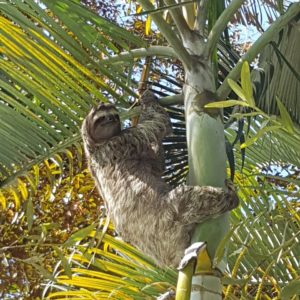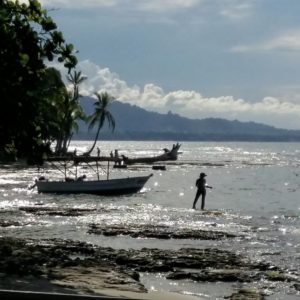Caribbean flavor on the Atlantic Coast
Don’t miss out on Costa Rica’s other coast
Costa Rica’s Atlantic Coast is sometimes overlooked by visitors due to false rumors that it’s incredibly rainy and difficult to access. Yes, it’s true that the region receives higher overall rainfall in the rest of the country. However, the hot and sunny mornings and early afternoons, amazing national parks, rainforests and coral reefs, sparkling pristine Caribbean beaches, and some of the country’s most rich and dynamic cultures easily make up for the excess H2O. As far as getting there, driving to Costa Rica’s “Caribbean Side” takes between three to five hours (depending on traffic) and offers visitors an amazing canvas of natural and cultural scenery.

When to Visit
The Atlantic Coast also enjoys two pronounced dry seasons, February and March and September and October. Coincidentally, each of these periods marks some of the rainiest months everywhere else in the country, offering a wonderful plethora of options for visitors traveling at these times. In addition, the overall increased rainfall contributes to a truly “tropical” atmosphere that permeates both the people and the environment. Nature is virtually bursting everywhere you look – monkeys, colorful birds, and countless other exotic species share living space with locals and visitors alike, making for a memorable lifetime experience.
Getting there
Route 32 is the best and fastest route from San Jose to Costa Rica’s East Coast and terminates in the port city of Limon. The highway passes through the Braulio Carrillo National Park and offers a glimpse of Costa Rica’s forest foliage in its entire verdant splendor. You’ll see breathtaking vistas of pristine cloud and rainforests, waterfalls, and looming cliffs draped in jungle foliage, as you descend eastward into the country’s lowlands. In addition to scenic, Route 32 is notorious for being steep, curvy, wet, and foggy and is the principal thoroughfare for trucks and other cargo vehicles bringing goods to and from the capital, so be cautious and take it slow.
Once reaching the Caribbean lowlands you’ll pass through what is known as Costa Rica’s “banana belt,” characterized by kilometer upon kilometer of banana and pineapple plantations (among other crops). From Guapiles, Route 247 leads visitors to La Pavona passenger boat launch where visitors take the final stretch of their voyage to Tortuguero or Barra del Colorado by boat via the estuaries, mangroves, and river systems that comprise the area’s topography and are the only way of reaching the isolated towns and national parks other than flying.
Tortuguero and Barra Del Colorado
Tortuguero National Park is a famous migratory destination for four species of turtles, the endangered green turtle, leatherback, loggerhead, and hawksbill. Between May and November, the turtles arrive in the hundreds to lay their eggs in the warm and protected sands of the park. Countless additional species of mammals, reptiles, and birds are drawn to the abundance of eggs and hatchlings, including pumas and other big cats, making the park a perfect place to witness nature’s splendor.
Barra del Colorado is located further north near the border of Nicaragua and accesses the tributaries of the San Juan River and river basin. Much of the tiny town and handful of adventure lodges are on stilts over the watery floor and cater largely to sports fishermen and outdoor enthusiasts looking to experience what “off-the-beaten-track” really means. The combination of river, ocean, and jungle ecosystems have created the perfect environment for giant tarpon and snook to thrive, luring professional anglers from all over the globe.
Cahuita, Puerto Viejo, and Manzanillo
To really experience the laid-back Caribbean charm and world-famous beaches, you must head to the southeastern towns, Cahuita, Puerto Viejo de Talamanca, and Manzanillo. Once you’ve arrived at Port Limon on Route 2, follow the coastline south on Route 36 to these popular beach towns, before arriving at the Panama border.

The Caribbean coast is renowned for its unique Creole language – known as Criollo Lmonense or Mekatelyu, which is spoken alongside Spanish and English, as well as some native indigenous tongues. Much of the population is of Afro-Caribbean decent mixed with Spanish and Indigenous Bribri and Cabecar counterparts creating a culture completely different than the rest of the country. The spicy Creole cuisine, including Rondon, a spicy seafood gumbo, and coconut beans and rice, are must-tries.
Each of these charming towns has something special to offer, including the beachfront Cahuita National Park with clear emerald waters and coral reefs, surfing and reggae in Puerto Viejo, and Manzanillo’s protected National Gandoca Refuge with some of the country’s best reef snorkeling and scuba diving.
Ask your rental agent for an up-to-date map detailing the country’s entire road system and extra tips for reaching your particular destinations.

Leave a Reply